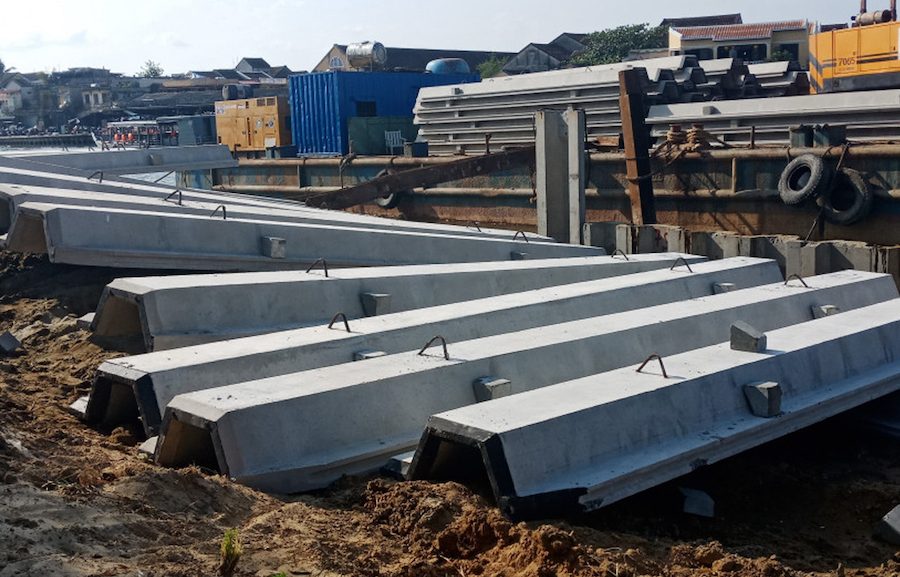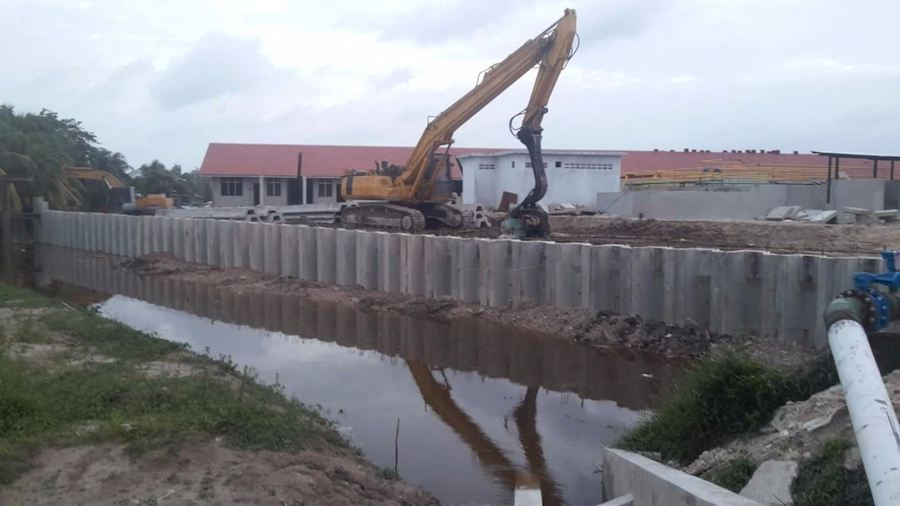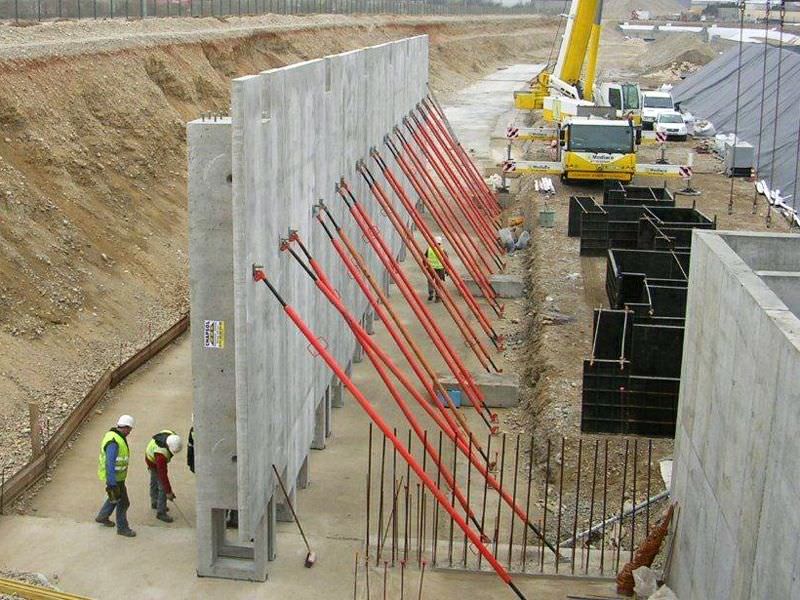As you search for sheet pile materials, one you’ll come across is concrete. While it might seem like a simple option, concrete piles are actually quite intricate. Below you’ll discover a plethora of information about concrete piles and what projects they’re best for.
How is Concrete Sheet Piling Made?
Concrete sheet piling is formed by pouring concrete into a special metal mold. It will then be left to dry and the mold will later be removed.
These piles will either be precast or prestressed.
Precast
Precast sheet piles are one of the most frequently relied on. Because they have a high vertical pile load, they are extremely resistant to pressure. They’re typically used when soil conditions are subpar and a strong sheet pile is necessary.
These piles will be either driven or bored. A driven pile will use vibrations to insert the concrete piece. This is often formed off-site. Driven piles can usually be customized better than bored ones and are ideal to use in the water.
The bored process is done on-site with the help of drilled displacement, mini piles, and continuous flight augers. Because it’s done at the project spot, bored piles don’t require large excavations which leads to fewer soil disruptions.
Prestressed
Prestressed piles are built to counter compression and are built in a square shape with double reinforcements. Because they can hold such heavy loads, they’re good for heavy construction projects, like bridges.
What are Concrete Piles Best For?
This material is built for projects such as bridges and oil rigs. They’re particularly good for marine construction because they can withstand harsh coastal conditions.
Concrete piles are also helpful when building foundations because they can be pushed somewhat deeper into the soil than other piling materials.
Dynamic Pile Testing – How to Tell Which Load is Ideal
Due to all the options available, it can be tricky to understand which concrete pile type is right. This is where dynamic pile testing comes in. With this technique, you can understand a pile’s bearing capacity after applying a dynamic load to its head.
Dynamic pile tests tend to be more versatile (and less expensive) than static pile testing. The latter requires slow tests which might provide more precise details, but it takes a lot of time to set up. Static pile tests also don’t work well for marine projects.
Benefits of Concrete Sheet Pilings
They’re Less Susceptible to Damages
Thanks to their composition, concrete sheet pilings are less likely to corrode than other pile materials, like steel. This makes them a reliable option for marine construction because they provide steady support in the midst of severe weather elements. If they start to deteriorate, they can quickly be fixed, such as with the help of glass fiber reinforced polymer jackets.
They’re Easy to Install
Another key benefit of concrete piles is that they’re pretty easy to lodge in place. Because excessive formwork and excavation aren’t necessary, they can be placed in the terrain within minutes.
You’ll find that thanks to this simple installation the piles won’t create a mess. This keeps the site clean and aids you in getting the project done faster.
They’re Safe to Use in Soft Soil
Soft soil can sometimes be problematic when driving piles because they create a drag force. Concrete piles are a great choice to use in this terrain because they’re solid. This way, there’s no need to worry about them buckling once installed.
Are There Downsides?
One thing that might make some hesitant to use concrete is its cost. While the material itself is affordable, the installation might be a little pricey, especially since numerous workers might need to assist with it. This makes it not always the best choice for those who are on a budget.
Concrete also needs to be mixed and settled. This can be a long process, especially if you’re on a tight schedule.
The last thing to keep in mind is that additional support might be necessary, especially if you use precast selections. If they undergo intense pile driving, it could weaken them. Because of this, ensure that extra reinforcement rods are put in place.
What to Look for in Concrete Sheet Piles
Their Shape
One thing to consider is the pile’s shape. This material comes in a few different options:
- Rectangular – used for horizontal piles and reinforced with steel bars.
- Circular – provides a large surface and tends to be stronger than rectangular piles.
- Square – does well at resisting lateral loads.
- Octagonal – contains extra reinforcements along the edges and is ideal for hammer piling.
It’s vital to understand these different designs and their purpose. Otherwise, you might find the pile doesn’t secure itself well.
Their Quality
You’ll also want to take a look at the concrete’s quality. While it might seem that all concrete piles would be of the same standard, this isn’t always so. Sometimes, manufacturers might quicken the process leading to thin sheets that have cracks.
One way to evaluate the strength of a concrete pile is through a pile integrity test. This can be done with the assistance of a special testing device that you connect to the pile. You’ll then need to slightly hit it with a hammer. The vibrations will be measured and analyzed by the gadget which will then create a report based on the force and velocity. This way, you can tell if there are hidden cracks, necking, or voids.
Their Installation Process
It’s also good to examine the concrete’s installation requirements. As mentioned above, it’s usually pretty simple. But, in some cases, more help might be needed. Sometimes, the process might also be a bit more technical if you plan to install the piles in tight areas. It’s vital to investigate the best installation method beforehand to guarantee that the piles not only are easy to put in place but live up to their fullest potential.
While these piles can sometimes be costly, they’re remarkably versatile and hold an impressive amount of weight. If you’re searching for a reliable piling material, definitely consider concrete.


